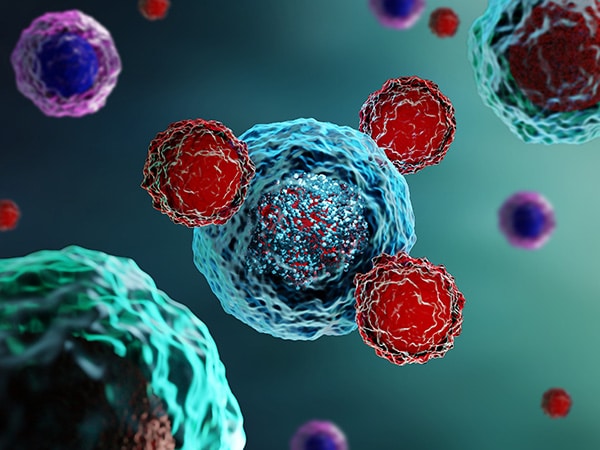Leukemia

There are several types of leukemia, a cancer that starts in the tissue that forms blood. Most blood cells develop from stem cells in the bone marrow. In a person with leukemia, the bone marrow makes abnormal blood cells. The abnormal cells are leukemia cells. Unlike normal blood cells, leukemia cells don’t die when they should. They may crowd out normal white blood cells, red blood cells, and platelets. This makes it hard for normal blood cells to do their work.
Types of leukemia in adults are expected to account for about 3% of all new cancer cases in 2024, or about 62,770 new cases and an estimated 23,670 deaths, according to National Cancer Institute’s Surveillance, Epidemiology, and End Results (SEER) Program. The relative five-year survival rate is 67%.
The four most common types of leukemia are:
- Acute lymphoblastic leukemia (ALL): ALL affects lymphoid cells and grows quickly. Leukemic blast cells usually collect in the bone marrow and blood.
- Acute myelogenous leukemia (AML): AML affects myeloid cells and grows quickly. Leukemic blast cells collect in the bone marrow and blood.
- Chronic lymphocytic leukemia (CLL): CLL affects lymphoid cells and usually grows slowly. Blood tests show an increase in the number of white blood cells.
- Chronic myelogenous leukemia (CML): CML affects myeloid cells and usually grows slowly at first. Blood tests show an increase in the number of white blood cells. The number of leukemic blast cells in the bone marrow can help determine the phase of the disease.
Source: National Cancer Institute



